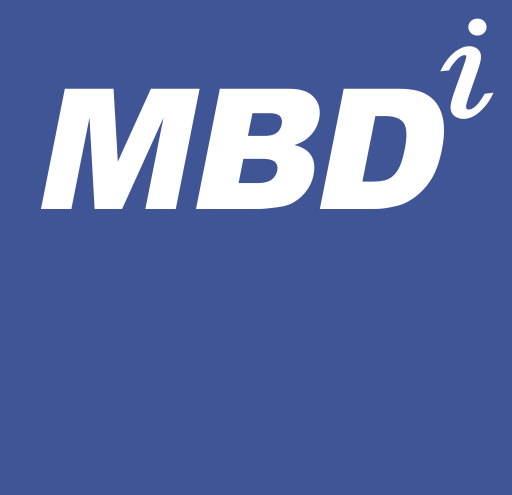If you are attempting to grow revenue, tackling increased competition for fewer opportunities while opening new markets with a leaned-down organization, the focus must eventually be upon performance improvement. Strong Business Development plans and processes can only drive revenue to a point. The spotlight must then be on the people involved in developing business for your organization, and how to manage this team via metrics if your revenue growth goals are to be met on a reoccurring basis.
And, you cannot manage what you cannot measure.
Humans like to rely on their gut and the financial success of a company to determine whether or not an organization is sound. But as we all know, selling unspoiled water after a hurricane is easy if you have the supply and the customers have the money. Therefore, the efficacy of your sales staff has little to do with the volume sold!
Years of sales and marketing evolution along with the adaptation of current Customer Relationship Management (CRM) systems have evolved to the point where many executives are continually asking, “How do I know if my sales staff is competent or not? Who is the best, the worst?” To answer this question, management can benefit by assigning appropriate key metrics to measure their revenue generation teams. Considerable attention should be given to the behavior executives want to encourage and then develop appropriate BD metrics to drive that specific behavior. And these metrics will not be the same for every organization.
From our experience, implementing metrics into your Business Development organization’s processes can serve as the catalyst for change management, performance improvement and revenue growth. Measuring the health and effectiveness using BD metrics establishes a culture that demands improvement and accountability by making performance visible and thus subject to change.
The use of metrics is only one component driving change in a Business Development organization. Clarifying the different hunter, farmer, and service/support roles and responsibilities, setting expectations, selecting appropriate metrics and holding team members accountable are all interconnected elements of performance improvement and revenue growth. However, without the aid of BD metrics, performance appraisal can easily become subjective.
The following discussion outlines a general rationale for using metrics in your business acquisition process and offers some examples of metrics that could be utilized.
The Case for Using Business Development Metrics
Establishing metrics to assess your real effectiveness in developing business for your firm requires that you decide what you want your sales model to look like so you measure the appropriate attributes of your performance. Then compare the cost and results of your team’s behavior — to what you expect — to that of your competition. These comparisons provide a good roadmap for the metrics you need to retain to evaluate your performance and effectiveness, and to optimize your behaviors to ensure team success and company revenue growth. However, this would not be the case if your company had the “franchise position” in the market segment being considered. Those with the franchise “front runner” position make the rules.
Every sale starts with a lead or bit of Intel that could result in uncovering a problem whereby a customer invests money to resolve it. When you initially engage a customer and encounter an opportunity, you may not know its real value or be aware it requires further discussion with the customer. This uncertainty makes tracking the cost of getting the lead-per-dollar of potential opportunity for your company difficult to quantify. And even though that cost is one of the first metrics in your process, you should consider trying to collect all of the components and continuously improve upon it. This requires you know the cost of generating a lead as well as the value of subsequent leads.
Agreeing to the definition of these costs and potential value of each lead will be a challenge to define and is the first step in deciding if you are ready for the metric. The overall cost to your organization to identify leads, converting leads to opportunities (qualifying), proposing on those opportunities and winning the business are all examples of metrics, which could ultimately lead to improvement goals, thus increasing your efficiency in developing business.
Let’s explore the value of some of these metrics. The discussion that follows is not an exhaustive list but rather an introduction to a range of statistics that can be utilized to effect revenue growth via performance improvement.
Range of Business Development Metrics
The Time Frame:
You need to decide on the time frame of interest around which to track metrics. Most sole proprietors do their own selling. Therefore, they’re internally monitoring all of their metrics and judging whether they are reliable, being filtered by their own psychological makeup. Larger organizations would do well to align the time frame of their thinking with behavior to the periods (months, quarters, or years) that make the most sense to discuss given the structure of your company. Time frames and comparison of metrics between consistent historical time frames will foster a dialog about improvements or declines in key metrics, and prompt adjustment in behaviors to change the rate at which you are improving or declining in performance.
Cost to Generate Leads:
If you decided to track this metric, it provides a way to quantify how efficiently you listen to the market and identify potential growth opportunities. Depending on the maturity of your organization, you might consider measuring new contacts, leads and opportunities by either the total number or value to track your effectiveness. To increase your efficiency in this area you might consider the following actions:
- (OI&Q)i, Opportunity Identification & Qualification training to provide your team with the high level customer engagement skills needed in gathering valid Intel on opportunities;
- Establish and clearly communicate goals and provide regular feedback to your team on their performance; and,
- Align variable compensation (the carrot) with the desired results.
Any or all of these actions should lead to an increase in your efficiency in lead generation. Or you might establish accountability relationships (management) that ensures work is completed in an efficient manner. You can then decide on a time frame of interest for the organization and graph its performance over intervals so that improving or declining trends are visible and most importantly communicated with action required noted.
Cost or Volume Processed to Qualify (or Disqualify) from Leads to Opportunities:
If you decided to track this metric, you’re tracking a statistic that offers a way to quantify the effectiveness of your organization (or individuals) in qualifying, disqualifying or identifying specific customer “issues” with the ability of your organization to solve these issues. Such a metric could be used to visibly communicate differences in Business Development efficiency in qualifying and disqualifying leads. Again, this metric can be measured as a number or a dollar value, depending on the sophistication and complexity of your organization.
Cost or Volume of Opportunities Processed into Proposals:
Almost all Organizations engaging in business-to-business transactions provide written proposals to their customers. Thus it is simple to measure the value of proposals submitted. This value is a metric that quantifies the total potential your Business Development process generates for the organization over a time period. Simply stated, it is the most accurate measure of the real value your Business Development organization is providing to your company through communicating with your existing or potential customers.
Since some people would argue the terms stated in the proposal may represent a contract, this metric is the first in a Business Development process that might have legal meaning to the organization. Additionally, this metric may warrant a more rigorous management control than all that precede it when it comes to customer dialog.
In utilizing this metric, it is useful to understand the percentage of proposals submitted on a reactive vs. a proactive basis. Reactive is responding to an RFP, where limited customer engagement has occurred prior to its release. Proactive proposals are the result of the BD organization developing in-depth partnership relationships, having engaged with the customer to shape or affect requirements. This statistic reveals how proactive a BD team really is and delivers valuable trends when aligned with the “Win Rate” metric as the output of the strategic plan where competition, risks and threats are explored.
Win Rate:
If a company decides the “proposal submitted metric” is valuable and can be tracked, it can also decide to calculate its Win Rate. Win Rates could be computed on number or dollar values depending on the particular market or business model established by the company. Win Rate provides the company the first metric that could be used to measure the quality of their relationships with their customers and prospective customers. Win Rates can be evaluated for both current and prospective customers and services that are to be provided. By computing Win Rates in a particular market with core competency, geographic location or time frame, it is possible to provide organization insightful information that might help improve the quality of its sales communication with its customers.
If you are price competitive (assuming capitalism will drive all companies to be so), then the only difference in Win Rate from Company A to Company B will be the quality of the trust relationship built with the customer during all phases of the BD process including any previous history. It should be noted that Win Rate can be affected by branding issues that has the potential to build customer trust independent of the behavior or effectiveness of the sales process.
Average Size of Opportunity Identified:
Measuring the value of identified opportunities will give you a clear indication whether volume of leads or raising the value of the sale sought is the most advantageous way of increasing your revenue growth. Assessment of this metric requires a great deal of wisdom regarding the value model of a particular opportunity and whether a particular customer set is understood or meaningful.
Average Proposal Submitted Value:
Measuring the value of the average submitted proposal provides some indication of the effectiveness of utilizing all the capabilities of the firm in communicating potential value of services to your customers. Fundamentally, the generation of a proposal requires some overhead time and cost. The total proposal value divided by the total proposal generation cost provides some indication of the efficiency of the company in directing use of its overhead activities to produce the maximum future value (proposal value) for the organization.
Average Proposal Win Value:
Measuring the value of the average win provides insight into the way the customer perceives your company’s value to them. The greater the award value (for like services) you provide to a company, the higher regard a customer will likely hold your company in comparison to your competition.
Average Proposal Loss Value:
In contrast to the average proposal win value, measuring the value of an average loss provides insight into the way a customer provides critical feedback regarding their perceived value of your particular service in comparison to that same service provided by your competition.
Conclusion
Clearly, all BD metrics can be measured as a function of the organization unit, sales representative, proposal team, geography, customer, market or other set of interests to the firm. Once you decide which of these to track, you can begin graphing the resulting metrics per-unit of time. Then, use the information as the vehicle to foster change in behavior to improve the metrics and reach the level you believe is appropriate for your organization.
Using BD metrics in collaboration with a strong Opportunity Identification & Qualification methodology (OI&Q)i will serve as the catalyst to promote change, encourage performance improvement and ensure revenue growth when married to your Business Development/Capture/Proposal Process. In this constantly changing and challenging environment, business as usual is not an option.
We believe you are growing — improving your metrics, or dying — going out of business!


